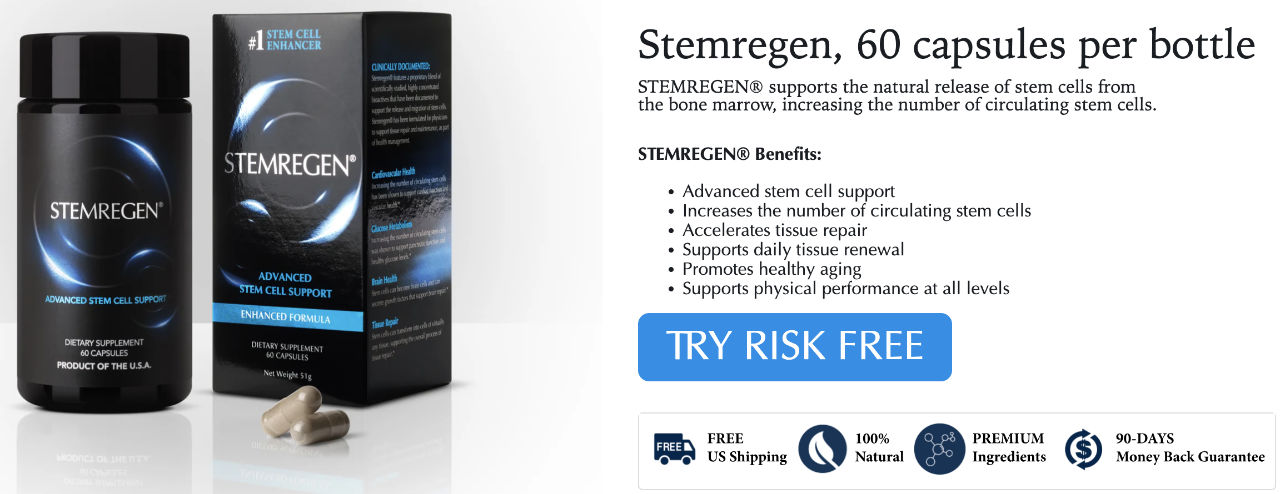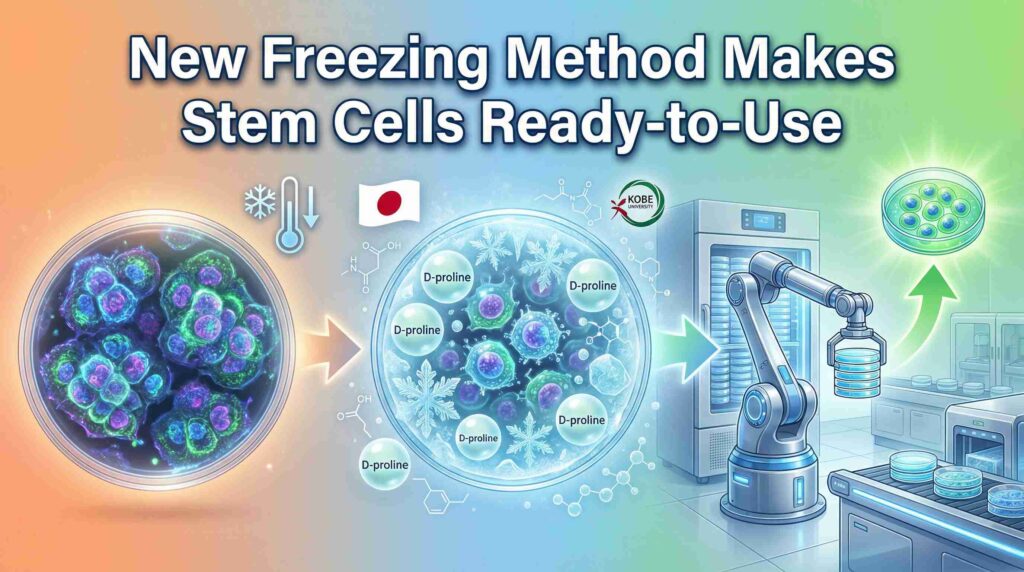A groundbreaking new program aims to develop stem cell treatments that could restore function to millions with brain injuries within five years
The United States Department of Health and Human Services has announced one of the most ambitious medical research initiatives in recent memory: a program to develop stem cell treatments capable of repairing brain damage caused by stroke, trauma, and neurodegenerative diseases.
The Functional Repair of Neocortical Tissue (FRONT) program represents what experts are calling a “moon shot” in neuroscience, with the bold goal of creating commercially viable treatments within just five years.
The Promise of Brain Repair
For millions of Americans living with brain injuries, the announcement brings unprecedented hope. The program specifically targets the neocortex, the brain’s largest region responsible for our highest cognitive functions including attention, thought, perception, and memory formation.
Currently, damage to this critical area from stroke, head trauma, or neurodegenerative conditions is considered permanent and irreversible.
“No technology exists to repair damaged tissue and fully restore lost function,” explained Dr. Jean Hebert, the FRONT Program Manager, in an official statement. “This will enable millions of individuals with what is currently considered permanent brain damage to regain lost functions, such as motor control, vision, and speech.”
The potential impact cannot be overstated. According to current medical understanding, once neocortical tissue is damaged, patients face a lifetime of disability with limited options for functional recovery.
The FRONT program aims to fundamentally change this reality by developing stem cell-based therapies that could literally rebuild damaged brain tissue.
A Carefully Designed Scientific Approach
The program, administered by the Advanced Research Projects Agency for Health (ARPA-H), part of HHS, is seeking researchers who can develop both the biological materials and the surgical procedures necessary for successful brain repair. The initiative calls for scientists to create commercially viable graft tissue and develop precise engraftment procedures that could restore functional brain recovery.
Importantly, the program has established clear ethical boundaries. Projects funded through FRONT will use only adult-derived dedifferentiated stem cells.
Proposals involving human embryonic tissue, fetal tissue, or human-animal chimeric tissue will not be accepted. This restriction addresses ethical concerns while focusing on scientifically viable alternatives.
Dr. Brent E. Masel, national medical director for the Brain Injury Association of America and clinical professor of neurology at the University of Texas Medical Branch, noted that these restrictions should not hinder progress. “Fifteen years ago, that would have been a limitation,” he explained, “but many researchers now work with adult-derived dedifferentiated cells.”
Expert Perspectives on the Timeline
While the scientific community welcomes this ambitious initiative, experts are expressing measured caution about the proposed timeline. Dr. Masel characterized the five-year goal as “very, very ambitious,” comparing it to “the proverbial moon shot.”
“It’s going to take more than 4 or 5 years to get this accomplished,” he told Medscape Medical News, highlighting the complex challenges involved in developing safe and effective brain repair technologies.
The comparison to the Apollo moon program is particularly apt. Like the space race of the 1960s, this initiative combines urgent national priority with cutting-edge science, substantial government backing, and an aggressive timeline that pushes the boundaries of what many consider possible.
Building on Recent Scientific Breakthroughs
The FRONT program doesn’t exist in a vacuum. Recent research has demonstrated promising advances in stem cell therapy for brain conditions, providing a foundation for this ambitious new initiative.
In April 2025, research groups in Tokyo, Japan, and at Memorial Sloan Kettering Cancer Center in New York City reported positive results from early studies using stem cells to produce dopamine in the brains of patients with Parkinson’s disease.
These studies represent significant progress in using stem cell therapy to address neurodegenerative conditions.
Additionally, Stanford University researchers reported encouraging results in May 2024 at the American Academy of Neurological Surgery, showing that stroke patients who received neural stem cell transplants experienced recovery of some motor function.
While these studies involved small numbers of patients, they demonstrate the potential for stem cell interventions to restore lost brain function.
The Research Timeline and Funding
Researchers interested in participating in the FRONT program face a compressed timeline that reflects the urgency of the initiative. Proposal summaries are due by August 18, 2025, with final proposals required by September 25, 2025. This rapid timeline suggests that HHS is eager to begin funding research as quickly as possible.
Notably, the announcement does not specify the total funding available for the program. This omission has raised questions in the research community about the scale of investment the government is prepared to make in this ambitious undertaking. Given the complexity and scope of the research required, substantial funding will likely be necessary to attract top-tier research teams and support the comprehensive studies needed to develop safe and effective treatments.
Implications for Patients and Families
For the millions of Americans living with brain injuries and their families, the FRONT program represents more than just a research initiative—it offers hope for conditions that have long been considered untreatable. The program’s focus on restoring motor control, vision, and speech could transform the lives of stroke survivors, traumatic brain injury patients, and individuals with neurodegenerative diseases.
The emphasis on developing commercially viable treatments also suggests that successful therapies emerging from this program could eventually become widely available rather than remaining experimental procedures accessible only to a few patients.
However, patients and families should understand that even if the program succeeds in its ambitious timeline, the path from laboratory breakthrough to clinical availability typically requires additional years of safety testing and regulatory approval.
The Broader Scientific Impact
Beyond its immediate goals, the FRONT program could accelerate broader advances in regenerative medicine and neuroscience. The intensive focus on neocortical repair may yield insights applicable to other brain regions and neurological conditions. The program’s emphasis on adult-derived stem cells could also advance techniques that avoid the ethical controversies surrounding embryonic stem cell research.
The initiative also represents a significant commitment by the federal government to supporting high-risk, high-reward medical research. Programs like FRONT demonstrate a willingness to invest in ambitious scientific goals that could transform medical practice, even when success is far from guaranteed.
Looking Ahead
As the research community prepares to respond to this unprecedented opportunity, the FRONT program stands as a testament to American scientific ambition. Whether the five-year timeline proves realistic or overly optimistic, the program has already succeeded in focusing national attention and resources on one of medicine’s most challenging frontiers.
The coming months will reveal which research teams rise to meet this challenge and how the scientific community responds to what may be the most ambitious neuroscience initiative in decades. For millions of Americans living with brain injuries, the program offers something that has been in short supply: genuine hope for recovery and restoration of lost function.
The success or failure of the FRONT program will likely influence how the government approaches other “moon shot” medical initiatives in the future. As Dr. Masel noted, this is indeed a moon shot—and like the original space program, it may require longer than initially planned, but the potential rewards justify the ambitious attempt.
Source Attribution: This blog post is based on reporting by Alicia Ault for Medscape Medical News. Original article: “HHS Launches Ambitious Stem Cell Program to Restore Brain Function” published July 18, 2025.
About the Original Author: Alicia Ault is a Saint Petersburg, Florida-based freelance journalist whose work has appeared in many health and science publications, including Smithsonian.com.
Disclaimer: This summary is for informational purposes only and should not be considered medical advice. Readers should consult with healthcare professionals for medical guidance.


